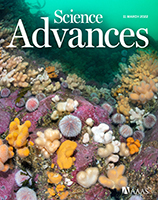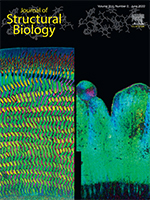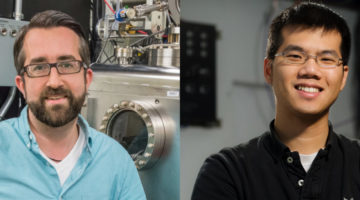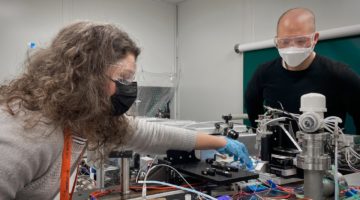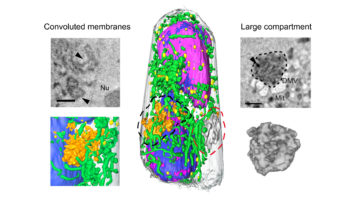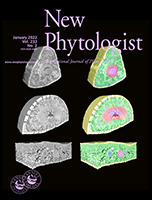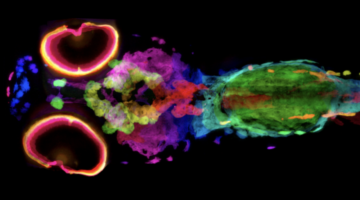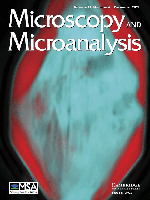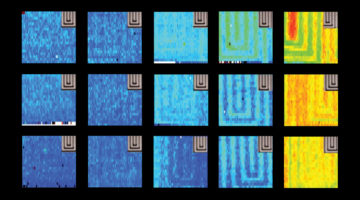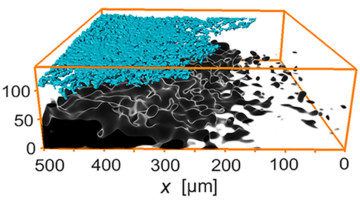In this review, Gilbert et al. develop a model for calcium carbonate biomineralization applicable to all phyla. Their model may help elucidate the key genetic components that drive biomineralization and offers insight into the consequences of global climate change on marine organisms. Read more »
ALS Work Using Microscopy/Imaging
These techniques use the light-source beam to obtain pictures with fine spatial resolution of the samples under study and are used in diverse research areas such as cell biology, lithography, infrared microscopy, radiology, and x-ray tomography.
Loss of biological control of enamel mineralization in amelogenin-phosphorylation-deficient mice
Amelogenin phosphorylation plays crucial roles in controlling structural, crystallographic, mechanical, and compositional characteristics of dental enamel. Thus, loss of amelogenin phosphorylation leads to a reduction in the biological control over the enamel mineralization process. Read more »
How X-Rays Can Make Better Batteries
In order to help our nation meet its goal of net-zero carbon emissions by 2050, scientists like William Chueh and David Shapiro are working together to come up with new strategies to design safer, long-distance batteries made from sustainable, Earth-abundant materials. They discuss their pioneering work in this Q&A. Read more »
Safely Studying Dangerous Infections Just Got a Lot Easier
Researchers have cranked up the speed of imaging infected cells using soft x-ray tomography, a technique that can generate incredibly detailed, three-dimensional scans. The approach gives an easy way to quickly examine how cells’ internal machinery responds to SARS-CoV-2, or other pathogens, as well as how the cells respond to drugs designed to treat the infection. Read more »
Rapid 3D Visualization of Lung Cells Altered by SARS-CoV-2
In this work, researchers illustrated the potential of soft x-ray tomography to rapidly characterize and quantify the structural changes induced in cells infected by SARS-CoV-2, revealing profound alterations of the subcellular architecture induced by viral infection over time. Read more »
The three-dimensional construction of leaves is coordinated with water use efficiency in conifers
3D anatomical views of conifer leaves with diverse morphologies, generated using synchrotron microCT imaging (colors show different segmented tissues). Top–bottom: Pinus monticola, P. pungens, and Wollemia nobilis. Image courtesy of Santiago Trueba. Read more »
New Technique Visualizes Every Pigment Cell of Zebrafish in 3D
Researchers developed a new technique that uses x-ray microtomography and silver staining to image every pigment cell of a whole zebrafish in 3D. The method could be used to learn more about the 3D architecture of melanoma tumors and potentially guide treatment decisions. Read more »
Ptychography Reduces Spectral Distortions Intrinsic to Conventional Zone-Plate-Based X-Ray Spectromicroscopy
The point spread function (PSF) of a conventional zone-plate-based microscope limits the achievable spatial resolution and results in spatially resolved spectra that do not accurately reflect the spatial heterogeneity of the samples when the scale of the detail approaches the probe size. X-ray ptychography, a coherent-scattering-based imaging scheme that effectively removes the probe from the image data, returns accurate spectra from regions smaller than the probe size. Read more »
Strategies for Reducing Platinum Waste in Fuel Cells
Industry and university researchers used the ALS to explore why the platinum used as a catalyst in hydrogen fuel cells degrades unevenly. The resulting knowledge has enabled the development of simple, effective strategies to reduce the waste of precious catalyst material, lowering the costs associated with a promising green technology. Read more »![]()
![]()
3D View Reveals Shadow Effect after Rapid Battery Charging
Using 3D x-ray microtomography, researchers measured the lithiation levels of particles in Li-ion battery electrodes during charging. At faster charging rates, lithium metal accumulated on the electrode surface and created a “shadow effect,” a region of poor lithiation in the electrode at some distance away from the lithium plating. Read more »
- « Previous Page
- 1
- …
- 4
- 5
- 6
- 7
- 8
- …
- 19
- Next Page »
